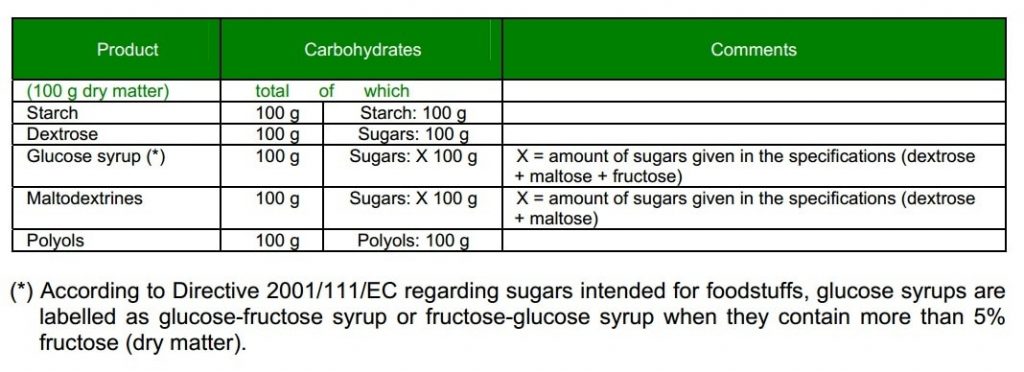Nutrition labelling of products of the starch industry
Directive 90/496/EEC on nutrition labelling of foodstuffs lays down the following definitions:[list style="star"]
- “carbohydrate” means any carbohydrate which is metabolised in man, and includes polyols;
- “sugars” means all monosaccharides and disaccharides present in food, but excludes polyols.
[/list]
Where nutrition labelling is provided, the declaration of carbohydrates can consist of the following:
Carbohydrates expressed as grams per 100 g or per 100 ml
- of which sugars (expressed in grams)
- of which starch (expressed in grams)
- of which polyols (expressed in grams)[spacer size="20"]
Starch and starch hydrolysates are mostly, depending of the food matrix in which they are used, entirely metabolised by the human body. Starch hydrolysates such as glucose syrup, dextrose and maltodextrins thus are to be considered as part of the total carbohydrates content of a food, and their mono- and disaccharide content is declared as “sugars”. As far as dextrose is concerned, it should be entirely included in the “sugars” content.
It is to be noted also that the terms “simple carbohydrates” and “complex carbohydrates”, which are not clearly defined, can not be used in nutrition labelling.
The table below is a summary of how starch and starch hydrolysates present in foodstuffs are to be declared in nutrition labelling (data reported as dry matter).
The information reported in the table is generally applicable, taking into account however that some starch products such as resistant starches, resistant dextrins and polydextrose are not, or only partly metabolised in man. The part of these substances that is not metabolized is to be considered as dietary fibre, whereas the amount that is metabolized is to be declared as carbohydrates.
In addition to the requirements explained above in the context of nutrition labelling, a reduction of the sugars content of foods should respect also the general principles of fair trade and should not be misleading to the consumer.


